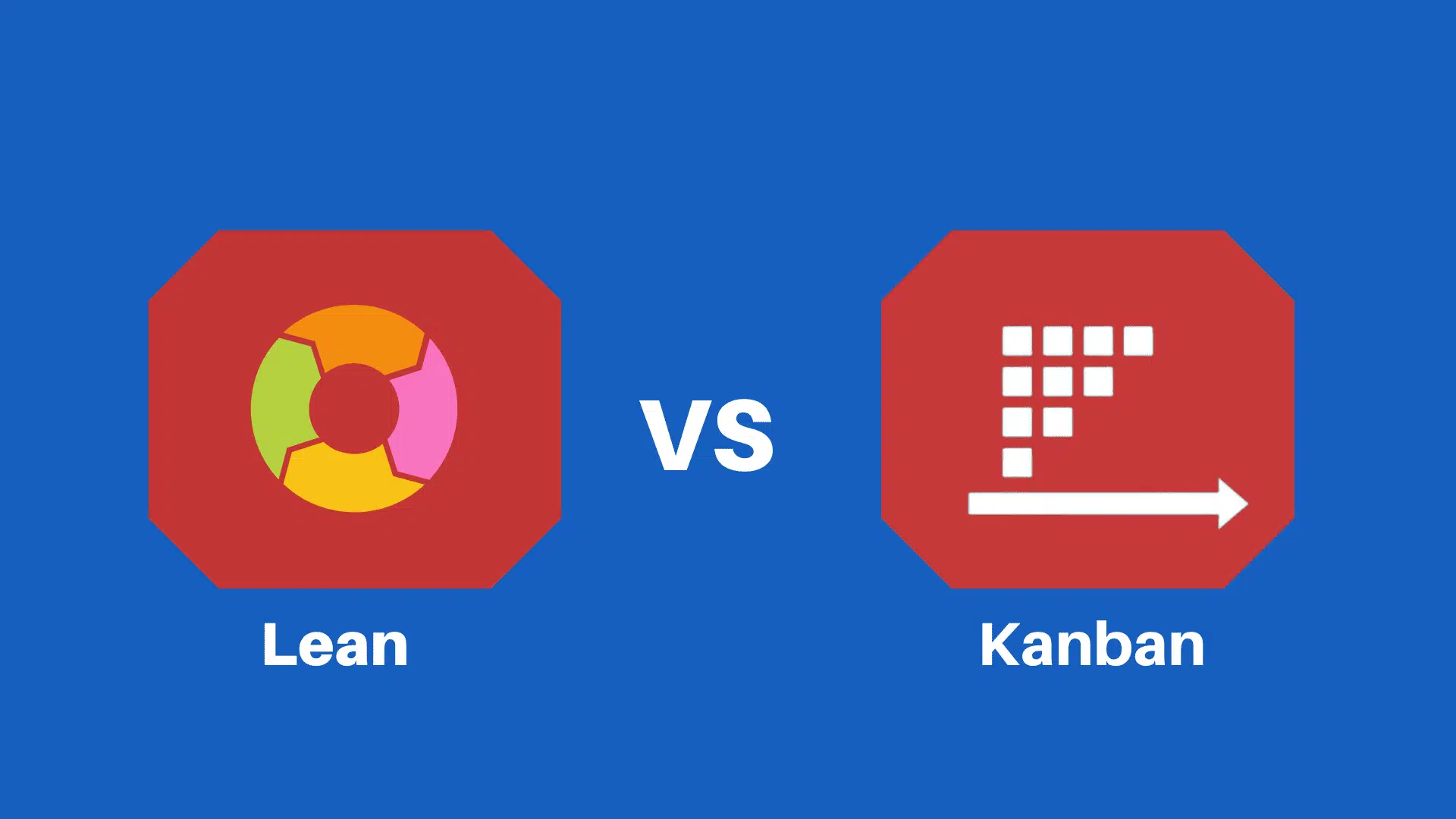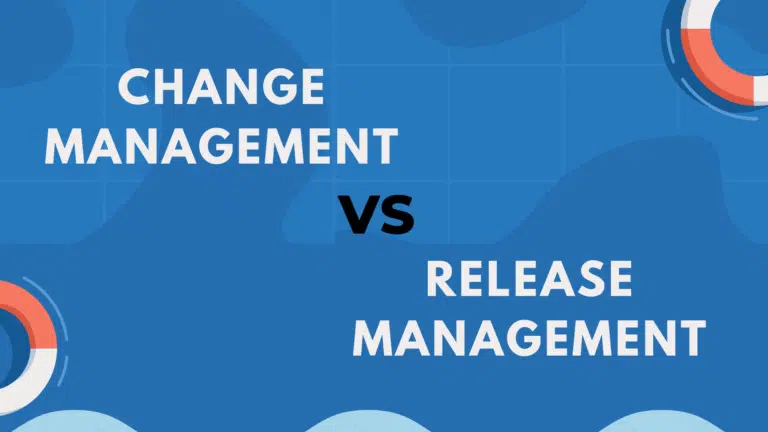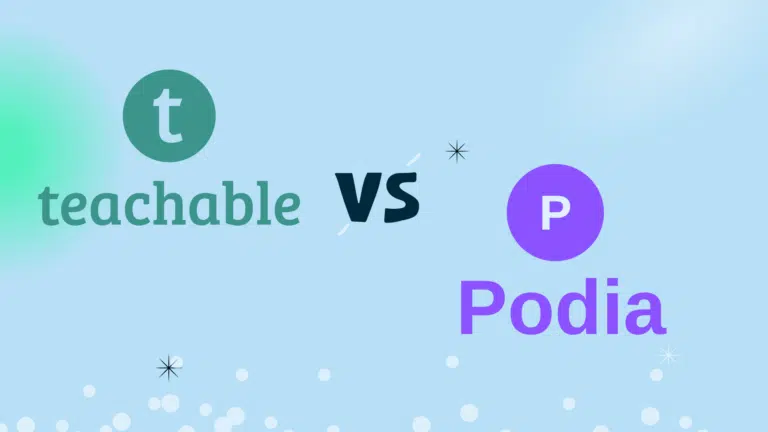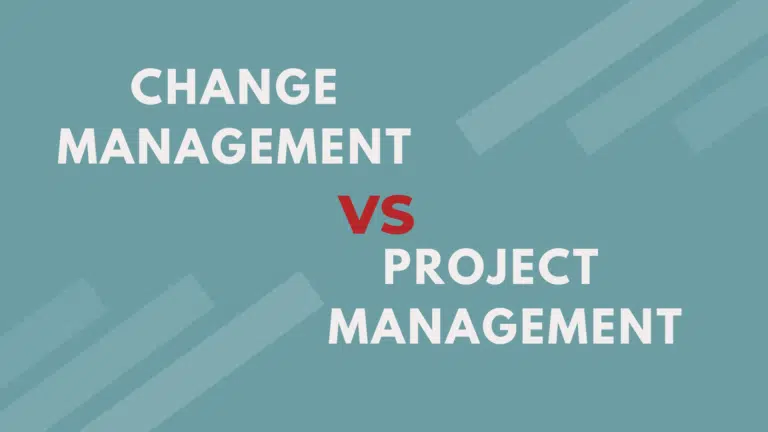Many professionals cannot distinguish between Lean and Kanban.
Therefore, I am writing this blog post on Lean Vs Kanban to explain both methodologies and their key differences.
Let’s get started.
Lean
The lean methodology was developed in Japan in the middle of the 20th century. Toyota adopted this system for their manufacturing process to improve product delivery and named it Toyota Production System. Later it was popularized as Lean Manufacturing. Taiichi Ohno inspired Lean Manufacturing.
In 2003, two Lean researchers: Mary and Tom Poppendieck, published a book called “Lean Software Development.” Since then, lean methods have been used extensively in Agile frameworks, known as lean software development.
The main objective of Lean project management is to remove waste. Any process, task or function that does not provide a value is a waste. Lean emphasizes customer feedback, continuous improvement, and value stream mapping.
Lean is an Agile methodology and iterative. The lean team focuses on delivering high-quality products and avoiding defects at the very beginning of the project.
Lean Principles
- Customer Focus: The customer’s expectations and needs are key lean principles. Lean software project management delivers maximum value to the customer by focusing on their requirements.
- Identify Value: Project managers determine what adds value from the customer’s viewpoint. Understand the specific features, attributes, or outcomes. All other activities that don’t add value must be minimized or removed.
- Map the Value Stream: The value stream represents the activities and processes in delivering a product or service. This includes the steps that do and do not add value. Visualizing the value stream helps you identify waste and areas to improve.
- Create Flow: Aim to create a smooth workflow through the value stream and minimize delays, handoffs, and interruptions. Streamline processes to reduce waiting time and ensure a steady flow of work from one step to the next.
- Establish Pull: Implement a pull-based system where work is “pulled” based on customer demand rather than “pushed” based on schedules or targets. This avoids overproduction and reduces excess inventory or waste.
- Seek Perfection: Strive for continuous improvement and perfection throughout the value stream. Encourage a culture of pursuit of excellence for lean teams. Continuously identify and remove waste, inefficiencies and bottlenecks. Emphasize the importance of learning, experimentation, and adaptation.
- Remove Waste: Lean aims to minimize or remove waste, often called “Muda” in Japanese. Common waste includes overproduction, waiting time, unnecessary transportation, excess inventory, over-processing, defects, and underutilized talent. The focus is on optimizing processes and removing activities that do not benefit the process or final product.
- Empower People: Empower and engage stakeholders. Encourage active participation, involvement, and collaboration. Recognize and use the knowledge and expertise of frontline workers who can identify improvement opportunities.
- Embrace Continuous Improvement: Promote a culture of continuous improvement and learning. Encourage employees to experiment, take risks, and find innovative solutions. Implement regular feedback loops, such as daily stand-up meetings, retrospectives and performance reviews, to incrementally identify improvement areas and potential changes.
Kanban
Kanban is a Japanese term that means a billboard or signboard.
Toyota Corporation invented the Kanban methodology in 1940 to improve the process flow. This methodology existed while Toyota implemented the Lean framework to improve its manufacturing process. This is why many professionals assume that Lean and Kanban frameworks are the same.
Kanban is workflow management that defines, manages, and improves processes and products. It increases efficiency and visualizes the workflow for further improvement.
However, Kanban is different from Lean. Lean focuses on removing waste, while Kanban focuses on improving process following, removing bottlenecks, and avoiding overloading and underloading employees. Kanban focuses on reducing the multitasking of team members.
Kanban is used extensively in Agile software development projects to improve the process flow and make teams more efficient.
Workflow visualization and Work-In-Progress limit (WIP) are the key characteristics of Kanban. The Kanban system uses a Kanban board to display the tasks (through Kanban cards) in the workflow. Team members can see the important tasks and their status to speed up the work.
Kanban identifies the bottlenecks in the process and fixes them to provide optimal throughput.
Kanban is useful for complex projects and unpredictable work, while lean is useful for simple and stable work. Kanban can manage unstable priorities and dependencies, while lean requires a stable value stream. Both methodologies measure metrics such as cycle time, throughput, lead time, customer value, waste and quality differently.
Kanban Principles
- Visualize the Workflow: Kanban’s first principle is visually representing the workflow. This involves using a Kanban board that consists of columns representing different stages of work and cards representing work items. By visualizing the workflow, team members can clarify the work status and identify bottlenecks or areas that need attention.
- Limit Work in Progress (WIP): Kanban limits the number of tasks or works items in progress at any given time. Scrum master must limit the WIP so the Agile or Scrum team can prevent overloading and focus on completing existing work before taking on new tasks. This improves flow and reduces multitasking, which increases productivity and speeds up delivery.
- Manage Flow: Kanban emphasizes the smooth flow of work through the system. The goal is to maintain a steady and balanced workflow to ensure that work items move efficiently from one stage to the next. Teams should continuously monitor and optimize the flow and identify and address bottlenecks or obstacles that impede progress.
- Make Policies Explicit: Kanban encourages teams to make their work policies explicit and transparent. These policies define each workflow stage’s rules, guidelines, and expectations. By clearly articulating policies, teams can ensure consistent understanding and enable effective collaboration. Policies may include criteria for task prioritization, the definition of done, and specific guidelines for handoffs between team members.
- Improve Collaboratively and Evolve Experimentally: Continuous improvement is fundamental to Kanban. It promotes collaboration and encourages teams to evolve their processes experimentally. Through regular retrospectives and feedback loops, teams identify improvement areas and experiment with changes to optimize their workflow. Kanban encourages small, incremental changes rather than large-scale transformations, allowing steady progress and learning. The product owner must collaborate with the client, team, and scrum master effectively.
- Respect the Current Process, Roles and Responsibilities: Kanban recognizes and respects a team or organization’s existing processes, roles and responsibilities. It gradually evolves the existing system by identifying improvement areas and making iterative changes. The Kanban system emphasizes collaboration and encourages the involvement of all team members in the improvement process.
Lean Vs Kanban
The following table shows the key differences between Lean and Kanban:
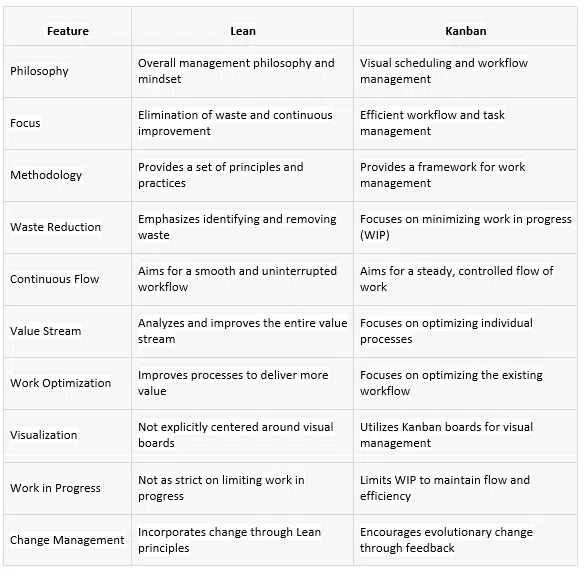
Summary
Lean and Kanban are project management methodologies used in Agile in waterfall frameworks. They are not mutually exclusive; you can use them together. Lean provides the overall philosophy and principles, while Kanban provides a framework to implement visual management and optimize workflow.

I am Mohammad Fahad Usmani, B.E. PMP, PMI-RMP. I have been blogging on project management topics since 2011. To date, thousands of professionals have passed the PMP exam using my resources.

